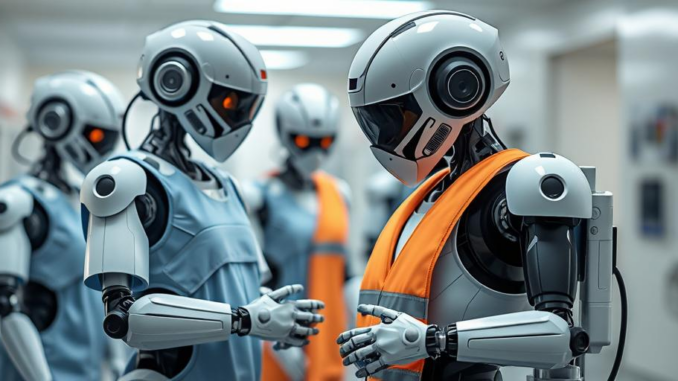
Summary
This article explores the rising use of robots in nursing homes, focusing on their role in fall prevention. It examines how robots improve patient safety by monitoring, assisting with mobility, and alerting staff to potential fall risks. Finally, it addresses the positive impact on nurses, allowing them to focus on personalized care and reducing physical strain.
Reliability and uptime matter in healthcare TrueNAS provides 24/7 support when it counts.
** Main Story**
Robots are making a real difference in how we care for our elderly, and you know, it’s not about replacing that human touch. Instead, they’re becoming invaluable assistants, especially when it comes to keeping people safe and sound in nursing homes.
One of the biggest areas where robots are stepping up? Fall prevention. It’s a huge deal in these settings because falls can lead to serious injuries, and really impact someone’s quality of life. It’s not just a physical thing; it messes with their independence and confidence too.
Robotic Monitoring: Always Watching, Always Alert
Think of these robots as super-attentive guardians. They’re equipped with sensors and some pretty advanced computer vision. So, they’re constantly watching how residents move. It’s about detecting tiny changes in the way someone walks, their balance, or even their posture. If something seems off, like an increased risk of falling, they can alert the nursing staff immediately.
Some can even talk to residents, which is pretty cool. Like, reminding them to use their walker or just offering a bit of support. It’s like having an extra set of eyes – particularly useful when direct supervision isn’t always possible.
Helping Hands for Mobility and Transfers
And it’s not just about monitoring. Transfer robots, for example, are a game-changer. They help nurses lift, move, and reposition residents safely. This is a big help for residents with limited mobility who need assistance getting out of bed or into a wheelchair. For instance, I remember reading about one nursing home where they saw a significant drop in falls after implementing these robots. By providing that support during those risky movements, the robots really minimize the risk of accidents.
Mobility robots are also helping residents to move around independently and safely. I can imagine the empowerment this creates. They can even help them bathe, promoting independence and reducing the need for constant assistance, it’s a win-win situation for both the resident and the staff.
Nurses and Caregivers: A Helping Hand
Speaking of staff, let’s not forget how robots help them out too. Think about all the heavy lifting nurses do every day. By taking over these physically demanding tasks, robots reduce the risk of workplace injuries for nurses, especially those pesky back injuries. This, in turn, can improve job satisfaction and reduce employee turnover, which I have been told is a major problem in the industry. Less physically demanding work, more fulfilling interactions. It strengthens the bond between residents and caregivers.
Positive Outcomes: Seeing the Results
Studies are showing that robots are actually making a difference in patient outcomes. The constant monitoring and timely alerts definitely help prevent falls, reducing injuries. Also, robots can contribute to less need for physical restraints, which promotes resident autonomy and dignity. Moreover, improved mobility can lead to a reduction in pressure ulcers and other complications, improving quality of life for residents, you can’t argue with that.
Looking Ahead: The Future of Care
What does the future hold? Well, robots aren’t going to replace human interaction. It is the human touch that helps provide compassionate care. They’re here to support and augment the efforts of healthcare professionals, allowing them to provide more efficient and personalized care. We can expect to see even more sophisticated robots in the future, improving patient safety, well-being, and independence. It’s about humans and robots working together to create a safer and more supportive environment for our aging population. And frankly, I think that’s something we should all be striving for. Because, let’s face it, we’re all heading that way someday.


Robo-grannies! I’m picturing a future where nursing homes are staffed entirely by robots, programmed to play bingo and dispense Werther’s Originals with unnerving accuracy. Who needs human interaction when you have algorithms and perfectly timed butterscotch?